Kidney Disease and Medication Accumulation: How Poor Dosing Leads to Toxicity
Kidney Medication Dosing Calculator
When your kidneys aren’t working right, even a normal dose of a common painkiller can turn dangerous. It’s not just about taking too much - it’s about taking the right amount for your kidneys. For someone with chronic kidney disease (CKD), many everyday medications don’t clear the way they should. Instead, they build up. And that buildup can poison your body.
Why Your Kidneys Matter More Than You Think
Your kidneys don’t just make urine. They filter about 30% of all medications you take. If your kidneys are damaged - even mildly - those drugs stick around longer than they should. That’s when things go wrong. A standard dose of ibuprofen might be fine for a healthy 40-year-old. But for someone with stage 3 CKD (eGFR under 60), that same dose can crash kidney function in days.The problem isn’t rare. About 37 million adults in the U.S. have CKD. Most don’t even know it. By the time they’re diagnosed, they’ve already been taking meds at full doses for years. That’s why so many end up in the hospital with acute kidney injury - often triggered by a drug they thought was safe.
Medications That Turn Toxic in Kidney Disease
Not all drugs are created equal when it comes to kidney safety. Some are fine. Others are landmines.NSAIDs like ibuprofen, naproxen, and diclofenac are the most common culprits. They reduce blood flow to the kidneys. In someone with healthy kidneys, that’s no big deal. In someone with CKD, it’s like turning off the water supply to a dying plant. Studies show these drugs triple the risk of acute kidney injury when eGFR drops below 60. And if you’re already on blood pressure meds like ACE inhibitors? The risk jumps fivefold. Many patients don’t realize these are OTC drugs - they pop them like candy for back pain or headaches. One Reddit user with stage 3 CKD saw his creatinine jump from 1.8 to 3.2 after just two days of ibuprofen. He spent five days in the hospital.
Trimethoprim (found in co-trimoxazole) is another silent killer. It blocks potassium from leaving your body. If you’re also taking an ACE inhibitor or ARB - common for kidney and heart patients - your potassium can spike dangerously fast. Within 48 hours, levels can rise by 1.2 to 1.8 mmol/L. That’s enough to cause heart rhythm problems or even cardiac arrest.
Sulfonylureas like chlorpropamide and glyburide are used for diabetes. But in advanced CKD, they hang around for days. Chlorpropamide’s half-life goes from 34 hours to over 200 hours. Glyburide’s active metabolite can cause hypoglycemia that lasts more than three days. Patients wake up confused, shaky, or unconscious - not because they skipped a meal, but because the drug never left their system.
Metformin is different. It’s usually safe - but only if you follow the rules. If your eGFR drops below 45, you need to cut the dose. Below 30, you stop it. Why? Because in kidney failure, metformin can cause lactic acidosis - a rare but deadly buildup of acid in the blood. But here’s the good news: a Cochrane review of 20,000 patients found zero cases of lactic acidosis when doctors followed the guidelines. It’s not the drug - it’s the dose.
Aciclovir, used for herpes, can crystallize in the kidneys. At standard doses, it causes crystal nephropathy in 5-15% of patients with eGFR under 50. Symptoms? Confusion, seizures, nausea. It’s not the virus - it’s the drug.
Direct oral anticoagulants (DOACs) like apixaban and rivaroxaban are popular for atrial fibrillation. But they’re cleared by the kidneys. In stage 4 CKD (eGFR 15-29), bleeding risk jumps 40% compared to someone with normal kidney function. Warfarin doesn’t have this problem - it’s cleared by the liver. So for some patients, switching back to warfarin is safer.
The Hidden Danger: Polypharmacy
Most people with CKD aren’t on one medication. They’re on ten, twelve, sometimes more. Diabetes. High blood pressure. Heart failure. High cholesterol. Gout. Osteoporosis. Each adds another drug. And each drug has its own risk.A 2021 study found CKD patients take an average of 10-12 prescriptions daily. That’s not just inconvenient - it’s a recipe for disaster. One drug might raise potassium. Another might lower blood pressure too much. A third might damage the kidneys directly. And none of them were checked for kidney safety.
Worse, many doctors still don’t check eGFR before prescribing. A JAMA Internal Medicine study found 35% of primary care visits involved prescribing without calculating kidney function. They see a creatinine of 1.5 and think, “It’s a little high, but not that bad.” But creatinine alone doesn’t tell the story. You need eGFR - the real measure of kidney filtering power.
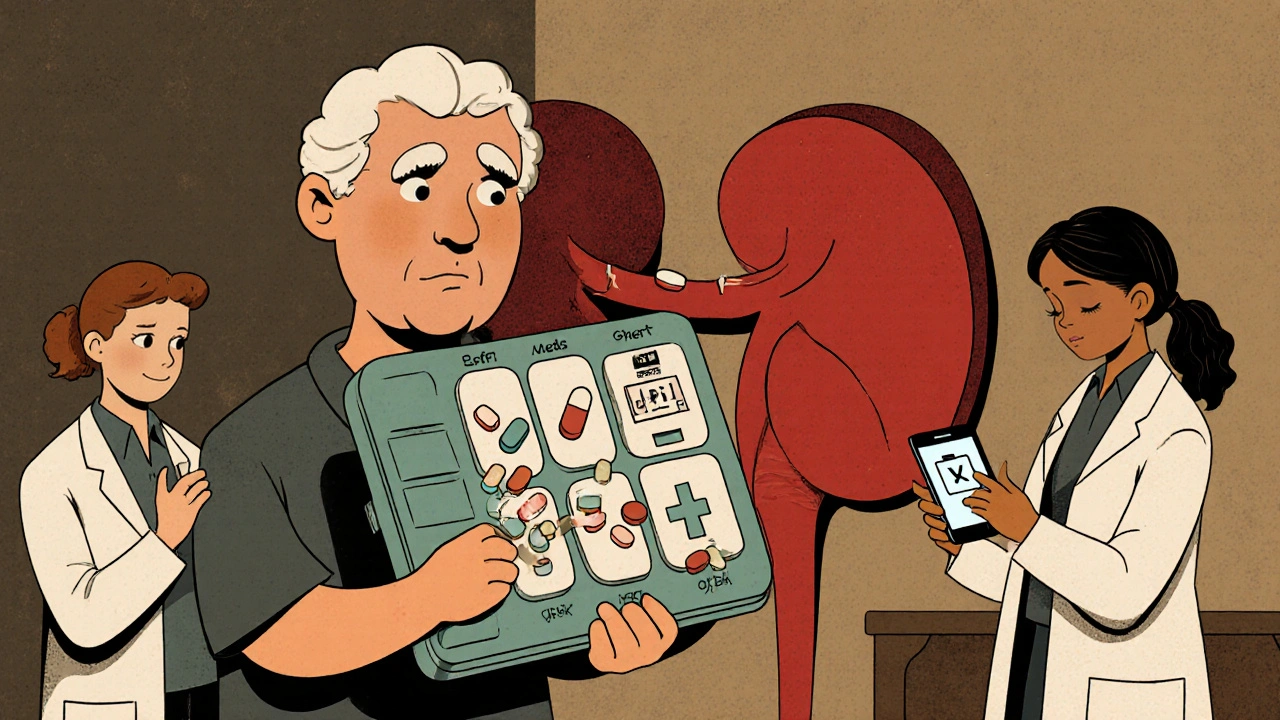
How to Stay Safe: Dosing Rules You Need to Know
The solution isn’t stopping meds. It’s adjusting them.Here’s what works:
- Know your eGFR. If you have CKD, get this number every 3-6 months. It’s not optional. It’s your safety net.
- Use the Cockcroft-Gault or CKD-EPI formula. These are the gold standards. Don’t rely on creatinine alone.
- Check every new prescription. Ask: “Is this cleared by the kidneys? Do I need a lower dose?”
- Use tools like Meds & CKD. This app, developed by Healthmap Solutions, flags risky drugs based on your eGFR. Patients using it report 82% better communication with their doctors.
- Watch for red flags. Dizziness, confusion, nausea, swelling, irregular heartbeat - these aren’t just “old age.” They could be drug toxicity.
Some drugs need dramatic changes. Vancomycin, for example. In normal kidneys, you take 15 mg/kg every 12 hours. In stage 5 CKD, you take the same dose - but only every 48 to 72 hours. And you must monitor blood levels. Too low? The infection won’t clear. Too high? You damage your ears and kidneys.
What’s Changing - and What’s Coming
There’s hope. The FDA now requires all new drugs to include renal dosing info on their labels. Pharmaceutical companies that skip this face $2.5 million fines. That’s a big shift.Technology is catching up too. KidneyIntelX, approved by the FDA in 2023, uses machine learning to predict your personal risk for drug toxicity. In a 10,000-patient study, it was 89% accurate. That means your doctor could soon get an alert: “Patient has eGFR 28. Avoid rivaroxaban. Use warfarin instead.”
Electronic health records are starting to auto-flag risky prescriptions. Stanford’s Dr. Richard Lafayette predicts that within five years, 75% of these errors will be caught before the prescription is even filled.
And new drugs like SGLT2 inhibitors (dapagliflozin, empagliflozin) are actually protecting kidneys - but only if dosed correctly. When eGFR drops below 45, you reduce the dose. Don’t stop them. Adjust them.
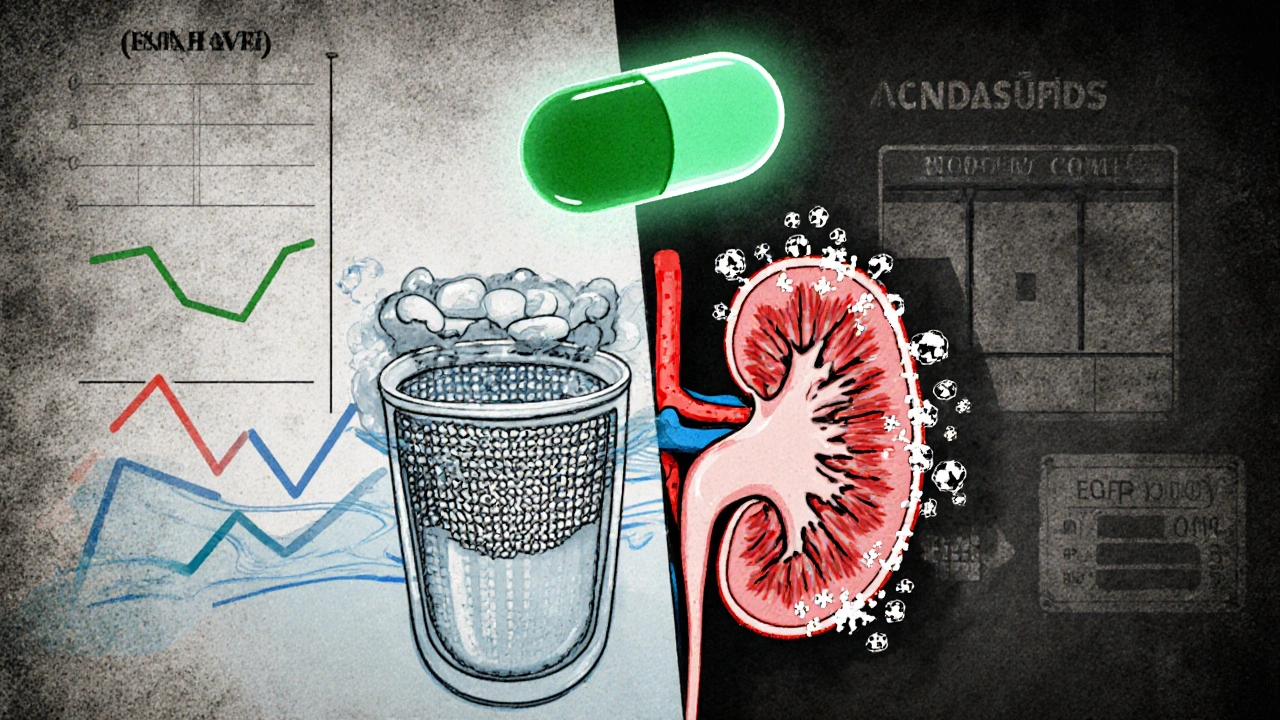
The Cost of Getting It Wrong
This isn’t just about health. It’s about money. Drug-induced acute kidney injury adds $10,000 to $15,000 per hospital stay. And 38% of these cases are preventable. In the U.S., CKD patients on 10+ medications have 2.3 times more hospital visits than those on five or fewer. That’s $18.7 billion in avoidable costs every year.In the EU, 47% of drug-induced kidney injuries were caused by wrong dosing. In the U.S., drug-related kidney injury causes 19-29% of all acute kidney injury cases - and kills nearly twice as many as non-drug cases.
It’s not that doctors are careless. It’s that the system is broken. Too many pills. Too little time. Too little training on renal pharmacology.
What You Can Do Today
If you or someone you love has kidney disease:- Get your eGFR checked - and write it down.
- Make a list of every medication you take - including vitamins and OTC drugs.
- Ask your pharmacist: “Which of these need a dose change for kidney disease?”
- Never take NSAIDs without asking your doctor first.
- If you feel off - dizzy, confused, weak - don’t assume it’s aging. Ask: “Could this be a drug?”
Kidney disease doesn’t mean you can’t take meds. It means you need smarter dosing. The difference between safety and disaster is often just a number - your eGFR. Know it. Track it. Use it.
Can I still take ibuprofen if I have kidney disease?
No - not safely. Ibuprofen and other NSAIDs reduce blood flow to the kidneys. If your eGFR is below 60, they triple your risk of acute kidney injury. Even occasional use can cause sudden damage. For pain relief, talk to your doctor about alternatives like acetaminophen (Tylenol), which is safer for kidneys - but still needs careful dosing if your liver is also affected.
What’s the safest blood pressure medicine for kidney disease?
ACE inhibitors and ARBs are actually the first-line choice for kidney protection - but only if your kidneys aren’t too damaged and you’re not on drugs like trimethoprim that raise potassium. Your doctor will monitor your potassium and creatinine closely. If potassium rises too high, they may switch you to a calcium channel blocker or a diuretic like chlorthalidone, which are safer in advanced CKD.
How do I know if a drug is cleared by the kidneys?
Check the drug label - it must list renal clearance info. You can also use free tools like Meds & CKD or the University of California San Francisco’s Renal PharmPK database. Generally, if a drug says “excreted unchanged in urine” or “>50% renal clearance,” it needs adjustment. Drugs like warfarin, statins, and most antibiotics (except aminoglycosides and vancomycin) are cleared by the liver and safer.
Why do some diabetes pills cause low blood sugar in CKD?
Sulfonylureas like glyburide and chlorpropamide are broken down by the kidneys. When kidneys fail, the drug and its active metabolites build up for days. This keeps insulin levels high even when you’re not eating - leading to dangerous hypoglycemia. Glipizide and metformin (when dosed correctly) are safer because they’re cleared differently. Newer drugs like SGLT2 inhibitors and GLP-1 agonists have almost no risk of low blood sugar and are now preferred for CKD patients.
Is there a test to see if my meds are harming my kidneys?
Yes - but it’s not one test. Your doctor should check your eGFR, serum creatinine, potassium, and sometimes urine albumin every 3-6 months. If your creatinine suddenly rises by 30% or more after starting a new drug, that’s a red flag. It means your kidneys are struggling. Stop the drug and get help. Don’t wait.
Can kidney damage from meds be reversed?
Sometimes. If caught early - within days - stopping the toxic drug can let your kidneys recover. But if the damage lasts weeks or months, scarring sets in. That’s permanent. That’s why early detection matters. A sudden spike in creatinine after starting a new med? That’s your body screaming for help. Act fast.
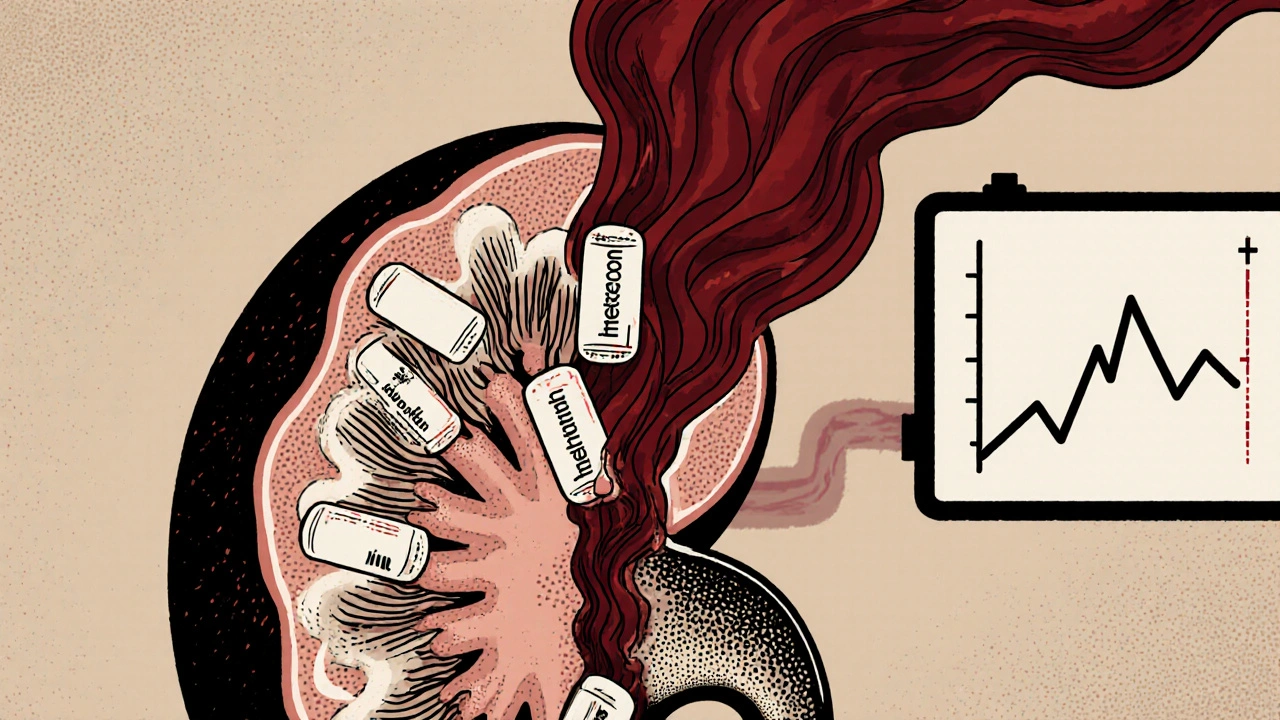
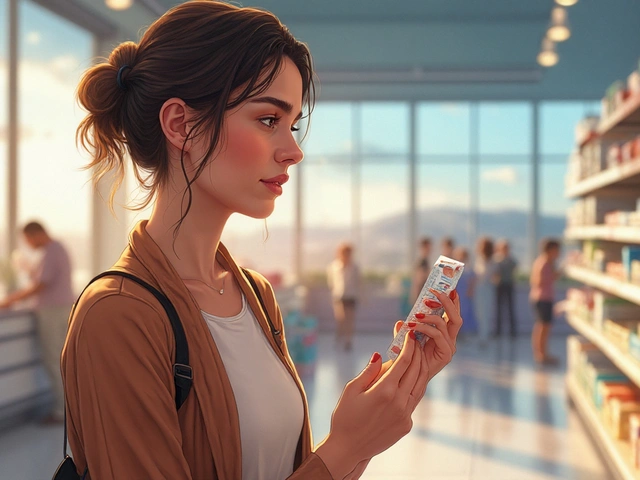
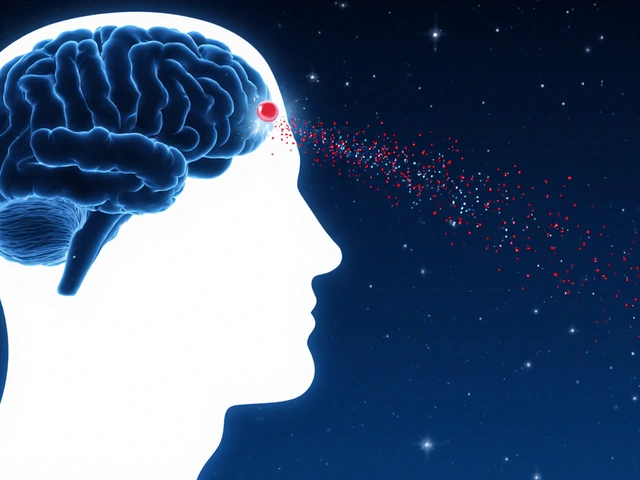
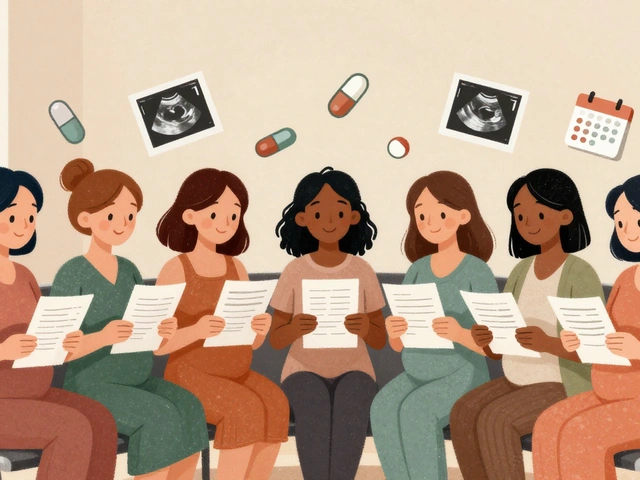
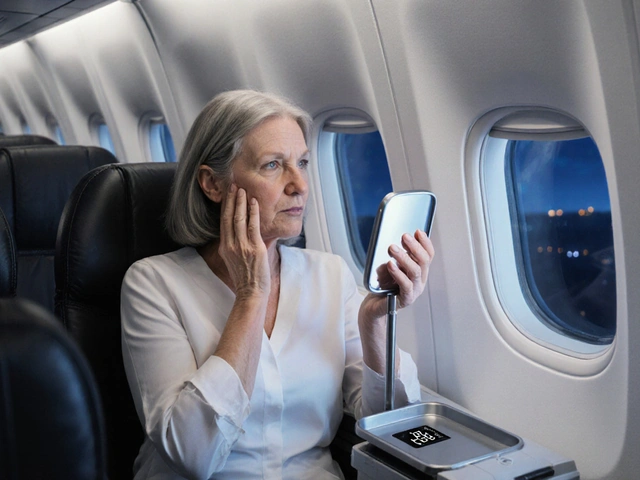
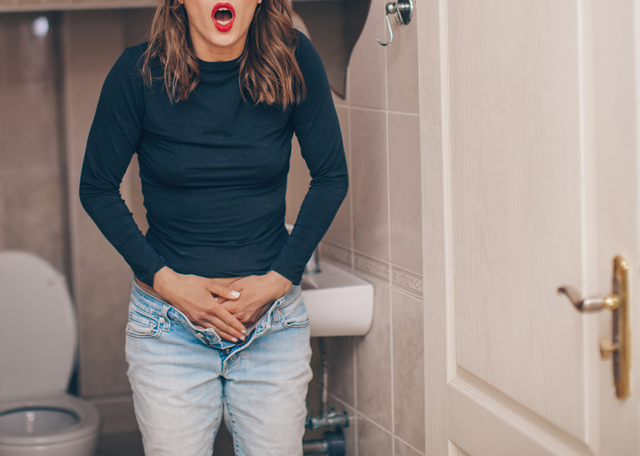
12 Comments
Tyler Wolfe
October 29 2025Just got my eGFR back last week - 42. Had no idea ibuprofen was that dangerous. Stopped cold. Switched to Tylenol. Feels weird not popping pills like candy anymore.
Gordon Oluoch
October 31 2025People treat OTC drugs like harmless candy. That’s the problem. No one checks eGFR. No one reads labels. Then they wonder why they end up in dialysis at 55. This isn’t rocket science. It’s basic pharmacology. If your kidneys are failing, your meds need to adapt. Not the other way around.
Neil Mason
November 1 2025Had a cousin in Canada with CKD who got hospitalized after taking naproxen for a bad back. Doc didn’t even ask about kidney function. She’s lucky she didn’t die. We all need to stop assuming ‘natural’ or ‘over the counter’ means ‘safe.’ It doesn’t. Especially when your kidneys are tired.
Andrea Gracis
November 2 2025Wait so metformin is okay if you dose right? I’ve been scared to take mine since my last blood test. Can someone explain how much less I should take if my eGFR is 38?
Matthew Wilson Thorne
November 3 2025Aciclovir crystallizing in kidneys? That’s just poetic. Like your body’s rejecting the very thing meant to save you. The irony is beautiful.
Imogen Levermore
November 3 2025Big Pharma doesn’t want you to know this. Why? Because if you adjusted doses properly, they’d lose billions. They profit from dialysis, hospital stays, and kidney transplants. This isn’t medical advice-it’s a cover-up. 🤫💊
Chris Dockter
November 4 2025Doctors are lazy. They prescribe like they’re running a McDonald’s drive-thru. ‘Here’s your pill. Next.’ No eGFR check. No follow-up. You think they care? They get paid per prescription. Not per outcome. Your kidneys? Just collateral damage in the profit machine.
Emily Gibson
November 5 2025My mom has CKD and takes 11 meds. I made a color-coded chart for her. Red = avoid. Yellow = check with doc. Green = safe. She’s been using it for 6 months. No more ER trips. It’s not glamorous but it saved her life. You don’t need a PhD. You just need to write it down.
Mirian Ramirez
November 6 2025So I just found out my blood pressure med is cleared by the kidneys and I’ve been on the same dose for 5 years. My eGFR dropped from 65 to 48 last year and no one said anything. I’m so mad at myself for not asking. I just thought ‘if it ain’t broke don’t fix it.’ Turns out it was breaking slowly and no one noticed. I’m printing out that Meds & CKD app right now. Thank you for this post.
Kika Armata
November 6 2025Let’s be honest: if you’re on more than five medications and your kidneys are impaired, you’re already a walking clinical trial. The fact that we’re still prescribing sulfonylureas to elderly CKD patients in 2025 is a national disgrace. This isn’t medicine. It’s pharmaceutical roulette.
Herbert Lui
November 8 2025It’s funny how we fear viruses and cancer but ignore the quiet killers in our medicine cabinet. A pill that doesn’t clear? That’s not a treatment. That’s a slow-motion suicide. We treat kidneys like they’re optional organs. They’re not. They’re the filters holding the whole system together. When they fail, everything else starts to rot. And we’re still handing out ibuprofen like it’s candy.
Nick Zararis
November 10 2025PLEASE. STOP. USING. NSAIDS. IF. YOU. HAVE. CKD. I. SAID. STOP. I. MEAN. IT. I. HAVE. SEEN. IT. I. HAVE. LOST. FRIENDS. TO. THIS. YOU. DON’T. NEED. IT. YOU. DON’T. WANT. IT. YOU. JUST. THINK. YOU. DO. TALK. TO. YOUR. DOCTOR. NOW. BEFORE. IT’S. TOO. LATE.